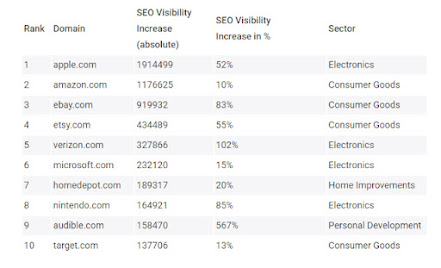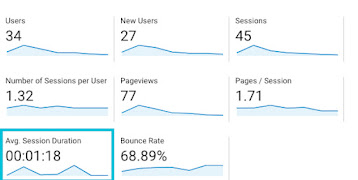Case Study: Home Depot’s Approach to an Omni-Channel Experience
Case Study: Home Depot’s Approach to an Omni-Channel
Experience
How does this
Effect Their SEO and Web Measurement Strategy?
The Home Depot is a home improvement retailer with 2,200 stores across North America. The company also sells home improvement products and services online. Through both in-store space and online channels the company offers more than one million products for DIY customers and professional contractors and installers (The Home Depot, n.d.).
Home Depot: Today’s Strategy to Drive Online and In Store Traffic
Today, the goals of The Home Depot management team are to offer a fully interconnected store and digital experience for its consumers. The company understands that most of their consumers start their journey in the digital world by searching for products or collecting how to advice. These same consumers may then finish their journey by purchasing in-store or using in-store pickup services. For The Home Depot, measuring their e-commerce efforts also largely tie-in to their in-store foot traffic numbers. Their strategy is an omni-channel approach, connecting digital and physical worlds. The company reports that more than half of their consumer’s online purchases are for store pick-ups, as these consumers choose not to wait for delivery. Their online presence continues to be a tool to drive not only more traffic to the www.homedepot.com, but also more foot traffic in their physical stores. The company also offers a mobile app with hopes to increase their mobile usage even further in the future (Danziger, 2020). This strategy definitely plays into their SEO plans and web analytics measurement processes.
Home Depot: SEO and Organic Search Traffic
During the pandemic many traditional brick and mortar stores had to shift focus and up their game in the ecommerce arena. As many consumers were shopping more online and making less visits to physical stores. Fortunately for The Home Depot, they had already been placing a huge focus on improving their multi-channel experience. In 2017, Home Depot launched an ambitious strategy called “One Home Depot.” This plan was put in place to improve the customer experience and interconnect the digital and physical worlds. This strategy included plans for improvements to upgrading e-commerce offerings and improved supply chain management. The plan also called for refreshed physical store fronts to align with needs of digital consumers who end up at the store to complete their journey, and an improved integration of online and store inventory tracking. The Home Depot invested nearly 300 million dollars to seamlessly integrate their online and in-store efforts, with hopes to improve the multi-channel experience for the consumer (Wallace, 2017). With this large of an investment it’s a guarantee that The Home Depot will want to measure and optimize their digital presence.
So far, it appears
that this strategy is paying off for The Home Depot. During the pandemic, The
Home Depot ranked in the top ten ecommerce sites to have made the biggest gains
on Google search performance. This is interesting considering, The Home Depot
is one of the few on the list to also have brick and mortar stores.
Figure 1: Search Performance, 2020 (Netimperative, 2021)
According to an
interview with one of The Home Depot’s SEO managers, Sean Kainec, The Home
Depot’s main SEO focus is to make sure Home Depot ranks high in organic search
for home-improvement related search queries. He also states that it’s important
to consider these searchers may purchase online or in-stores, so their SEO efforts
are focused on driving organic web traffic, but also focusing on the
interconnected strategy to bring foot traffic in the stores. The Home Depot’s
content strategy plays a big part in their SEO plan. The company optimizes for
more than just product related search, but also for inspirational and how-to
content that helps the consumer with their home improvement projects (Newlands,
2014). Figure 2 below shows a screen shot of The Home Depot website and the
inspirational and how-to content.
Figure 2: The Home Depot Website How-To Section (The Home Depot, n.d)
This type of longer form content offers many SEO benefits including more keyword opportunities, higher search rankings, and better bounce rates. Bounce rates can effect a site’s SEO because Google may factor these metrics. If visitors come to the page and leave right away that tells Google the content isn’t relevant, so writing long-form meaningful content can help keep website visitors on the page longer (WebFx, n.d.)
Another topic that Sean addresses in his interview is product descriptions that come from their vendors. With their competitors selling many of the same products, The Home Depot requests unique product descriptions from their vendors and also has a team dedicated to tweaking these descriptions as necessary to align with The Home Depot objectives (Newlands, 2014).
For the past six
months, data from SEMRush indicates that The Home Depot website gets 18% of
their website traffic from organic search, paid ads only generated 2% of
traffic. This demonstrates that focusing on their SEO strategy for organic
search ranking is important for the brand.
Figure 3: The Home Depot Web Traffic (SEMRush, n.d.)
Measuring Success
With The Home Depot putting such a huge investment into improving their multichannel experience, they will need to effectively measure their efforts by using web analytic tools. According to The Home Depot CEO, Craig Menear, “We believe that the front door of our store is now in the customer’s pocket. Most of our customer’s shopping experience actually starts in the digital world even if it finishes in the physical world” (Danziger, 2020).
If this holds true
and many of their consumers start their journey online, monitoring their web
analytics is equally as important as measuring in store sales. In today’s world
the customer journey rarely starts and ends in one place. Web analytics and
tools to monitor their customer’s journey will be important for The Home Depot.
According to the Home Depot’s privacy policy they collect a variety information
from their customers using web traffic tools. Figure 4 below shows the
information The Home Depot collects via cookie tracking or gathered directly
from the consumer.
Figure 4: The Home Depot Privacy Policy (The Home
Depot, n.d)
References:
Danziger, P. N. (2020, February 26). Home Depot's
Transformation To A Fully Interconnected Retailer Shows Record-Breaking Results.
Forbes.
https://www.forbes.com/sites/pamdanziger/2020/02/26/home-depots-transformation-to-a-fully-interconnected-retailer-shows-record-breaking-results/?sh=e51902e73307.
Netimperative. (2021,
February 25). Organic search ECOMMERCE trends: Target and Home depot see
biggest in Google search visibility during pandemic. Netimperative.
https://www.netimperative.com/2021/02/25/organic-search-ecommerce-trends-target-and-home-depot-see-biggest-in-google-search-visibility-during-pandemic/.
Newlands, M. (2014, October 14). Sean kainec and Home
Depot's SEO [Interview]: SEJ. Search Engine Journal.
https://www.searchenginejournal.com/managing-home-depots-seo-interview-sean-kainec/115181/#close.
SEMRush. (n.d.). Traffic analytics. Semrush.
Retrieved September 9, 2021, from
https://www.semrush.com/analytics/traffic/overview/homedepot.com.
The Home Depot. (n.d.). About Us. The Home Depot.
https://corporate.homedepot.com/about.
WebFx. (n.d.). How can content marketing improve your
seo? WebFX. Retrieved September 9, 2021, from
https://www.webfx.com/content-marketing/content-marketing-improve-SEO.html.
Wallace, T. (2017, September 17). Home Depot's Innovative
& Successful Multichannel Strategy. The BigCommerce Blog.
https://www.bigcommerce.com/blog/home-depot-multichannel-strategy/#undefined.








Hi Erica,
ReplyDeleteThe Home Depot is an amazing organization. That was one of the reasons that I was in Atlanta frequently as they tested a great many experiments there (as well as in Charlotte:)
They have a fantastic tech team, and while they took a slightly different approach, they did some amazing things. They have an app that helps you in the store and takes you down a decision tree. That is pretty cool.